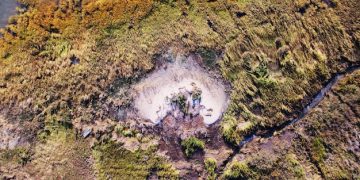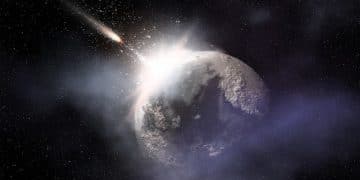Climate Change’s Impact on US Ecosystems: New Research on Biodiversity Loss
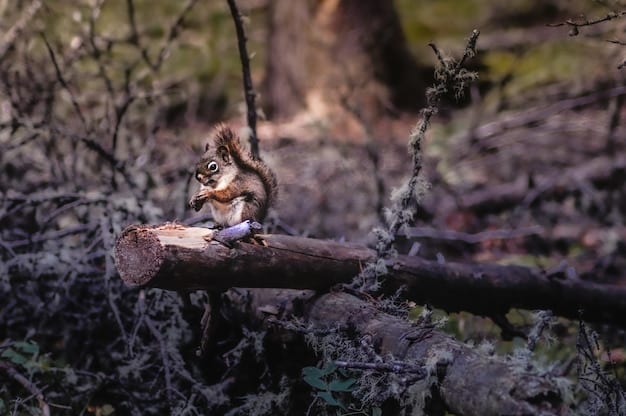
New research reveals that climate change is profoundly accelerating biodiversity loss across diverse US ecosystems, presenting critical challenges to natural habitats and demanding urgent conservation strategies.
The intricate tapestry of life across the United States is facing an unprecedented threat. From the remote wildernesses to the suburban backyards, the impact of climate change on US ecosystems: what new research reveals about biodiversity loss? is becoming alarmingly clear.
The Alarming Rise of Climate-Induced Biodiversity Decline
New scientific inquiries are painting a stark picture of how rapidly the climate crisis is reshaping natural landscapes and pushing countless species towards the brink. This isn’t merely an abstract global problem; it’s a tangible, immediate threat unfolding within the diverse biomes of the United States. Recent studies highlight that while some ecosystems might show resilience, many are already exhibiting significant signs of stress, with cascading effects through food webs and habitat structures. The scale and speed of these changes are challenging long-held assumptions about ecological adaptation.
Historically, ecosystems have adapted to natural climatic shifts over millennia. However, the current pace of warming, driven largely by anthropogenic emissions, far exceeds these historical rates. This accelerated change leaves little time for species to evolve or migrate, leading to localized extinctions and significant shifts in species distribution. The consequences ripple far beyond individual species, affecting ecosystem services vital for human well-being, such as water purification, pollination, and climate regulation.
Understanding the Pathways of Impact
The mechanisms through which climate change affects biodiversity are multifaceted and interconnected. It’s not just about rising temperatures; it encompasses a complex interplay of factors, each contributing to ecological upheaval. The insights from recent research provide a more granular understanding of these pathways, revealing nuanced interactions that demand tailored conservation responses.
- Habitat Degradation: Rising sea levels, increased wildfires, and prolonged droughts directly destroy or alter critical habitats, making them unsuitable for native species.
- Species Distribution Shifts: As temperatures change, species are forced to migrate to more favorable climates, often encountering new competitors or lacking essential resources in their new locales.
- Altered Life Cycles: Warmer temperatures can disrupt the timing of key biological events, such as blooming seasons or migration patterns, leading to mismatches between species and their food sources or reproductive partners.
Beyond these direct impacts, climate change amplifies existing stressors like pollution and habitat fragmentation. This synergistic effect creates a cumulative burden on ecosystems, making recovery more challenging. Understanding these complex interactions is crucial for developing effective mitigation and adaptation strategies, moving beyond broad strokes to targeted interventions that address the specific vulnerabilities of different US regions.
In essence, the new research underscores a critical urgency. The traditional view of climate change as a future threat is being replaced by evidence of a present and accelerating crisis of biodiversity loss. The resilience of US ecosystems is being tested, and the scientific community is providing the data necessary to inform immediate and decisive action.
Marine Ecosystems Under Duress: Ocean Acidification and Warming Waters
The vast marine ecosystems bordering the United States, from the vibrant coral reefs of Florida to the kelp forests of California, are bearing the brunt of climatic shifts. New studies are increasingly focusing on the dual threat of ocean acidification and warming waters, revealing their profound and often synergistic impacts on marine biodiversity. These changes are not only affecting individual species but are fundamentally altering the structure and function of entire marine food webs, with significant economic implications for coastal communities reliant on healthy oceans.
Ocean acidification, caused by the absorption of excess atmospheric carbon dioxide into seawater, is reducing the availability of carbonate ions, essential building blocks for shellfish, corals, and plankton. This process directly impedes the ability of marine organisms to form and maintain their shells and skeletons. Research has documented alarming rates of shell dissolution in creatures ranging from tiny pteropods—a vital food source for many fish species—to commercially important oysters and clams. The cascading effects are profound, impacting fisheries and threatening the very foundation of marine food security.
Coral Reefs: Bleaching and Collapse
Perhaps nowhere is the impact of warming waters more visually striking than in the bleaching of coral reefs. These underwater cities, teeming with life, are incredibly sensitive to temperature fluctuations. Even a slight increase in water temperature can cause corals to expel the symbiotic algae that provide them with nutrients and their vibrant colors, leading to “bleaching.” Prolonged bleaching events ultimately result in coral death. New research on US reefs, particularly in the Florida Keys and Hawaii, shows an alarming frequency and intensity of these events, leaving vast stretches of once-thriving reefs as barren skeletons.
- Increased Frequency: Bleaching events are now occurring more often than corals can recover, hindering regeneration.
- Reduced Resilience: Acidification weakens corals, making them more susceptible to bleaching and disease.
- Biodiversity Hotspots Lost: Coral reefs house a quarter of all marine species, and their decline directly leads to massive biodiversity loss.
The loss of coral reefs has far-reaching consequences beyond the marine environment. These natural barriers protect coastlines from storm surges and erosion, services that become increasingly vital in a changing climate. Their collapse exacerbates coastal vulnerability and undermines the economic viability of tourism and fishing industries.
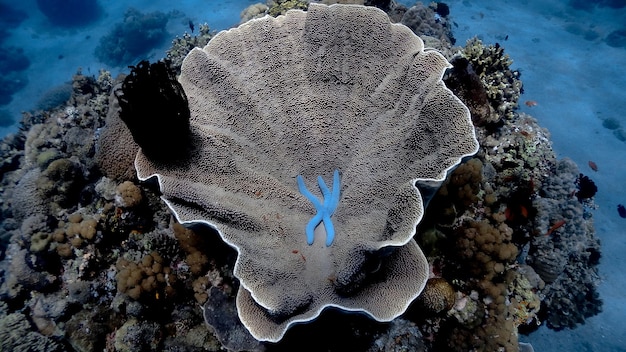
Furthermore, climate-induced changes are altering ocean currents and oxygen levels, creating “dead zones”—areas where oxygen concentrations are too low to sustain most marine life. These zones are expanding in various parts of US coastal waters, further contributing to habitat degradation and the displacement or mortality of marine organisms. The sheer scale of these changes demands a re-evaluation of marine conservation strategies, moving beyond local protections to address the systemic threats posed by a warming and acidifying ocean.
The new research unequivocally demonstrates that marine ecosystems are at a tipping point. The combined pressures of warming, acidification, and other human impacts are creating a scenario where recovery becomes increasingly difficult without significant global action to curb emissions. Protecting these vital ecosystems requires a concerted effort to understand and mitigate the complex web of interactions threatening their future.
Terrestrial Transformations: Forest Fires, Droughts, and Habitat Shifts
On land, the narrative of climate change impacts on US biodiversity is equally compelling, marked by intensifying natural disasters and shifting ecological boundaries. Forests, grasslands, and deserts across the nation are experiencing unprecedented stressors, pushing species beyond their adaptive capacities. The rise in the frequency and intensity of wildfires, prolonged droughts, and changes in precipitation patterns are directly altering fundamental terrestrial habitats, leading to significant biodiversity loss and disrupting essential ecosystem services.
The Western United States, in particular, has witnessed a dramatic increase in megafires, fueled by hotter, drier conditions and decades of fire suppression policies. These fires devastate extensive areas, destroying critical habitats and altering forest composition. New research shows that post-fire recovery is often hampered by ongoing drought, preventing the regeneration of native species and allowing invasive species to take hold. This cycle of disturbance and altered recovery trajectory fundamentally reshapes ecosystems, often reducing biodiversity and diminishing carbon sequestration capabilities.
The Expanding Reach of Drought
Drought, once a regional concern, is becoming a pervasive threat across vast swathes of the US, from the agricultural heartland to the arid Southwest. Prolonged water scarcity directly impacts plant life, which forms the base of terrestrial food webs. Declining plant health leads to reduced food availability for herbivores, which in turn affects carnivores. Aquifers are depleted, rivers and lakes shrink, threatening aquatic and riparian species. Studies are now quantifying the long-term ecological shifts resulting from these droughts, revealing reduced reproductive success in many species and an overall decline in population numbers. This hydrological stress disproportionately affects species with specialized water requirements.
- Vegetation Stress: Chronic water deficits kill trees and plants, increasing fuel loads for fires and reducing carbon uptake.
- Wildlife Impact: Reduced water sources and food scarcity lead to declines in animal populations and increased competition.
- Altered Species Composition: Drought-tolerant species may expand their range, displacing those less adapted to arid conditions.
Beyond these immediate impacts, climatic shifts are forcing species to migrate in search of more suitable conditions. The “Great Northward Migration” is a documented phenomenon among many species, as they attempt to track their preferred climate envelopes. However, this migration is fraught with challenges. Geographic barriers like mountain ranges or urbanized areas can impede movement, leading to “habitat squeeze.” Furthermore, species may arrive in new territories lacking their specific food sources, pollinators, or encountering new predators and pathogens to which they have no resistance. This reshuffling of species can destabilize existing ecological communities and create novel interactions with unpredictable outcomes for biodiversity.
The evidence from new terrestrial research points to a rapid restructuring of US landscapes. The resilience of these systems is being severely tested, and traditional conservation methods designed for stable climates are proving insufficient. Understanding the complex interplay of fire, drought, and species movement is paramount for developing adaptive management strategies that can help mitigate ongoing biodiversity losses and foster ecological resilience in a rapidly changing world.
Freshwater Fragility: Warming Rivers and Lakes, Altered Hydrology
The freshwater ecosystems of the United States—its intricate network of rivers, lakes, wetlands, and streams—are exceptionally vulnerable to the impacts of a changing climate. New research underscores how warming water temperatures, altered precipitation patterns, and rising evaporation rates are profoundly affecting aquatic biodiversity. These changes are not just aesthetic; they are disrupting the fundamental physical and chemical properties of freshwater habitats, threatening the survival of highly specialized species and compromising water quality for both ecosystems and human consumption.
As air temperatures rise, so do water temperatures in rivers and lakes. This warming directly impacts species adapted to colder water, such as trout and salmon, which require specific thermal ranges for survival, reproduction, and oxygen uptake. Warmer water holds less dissolved oxygen, creating hypoxic conditions that can be lethal to many aquatic organisms. Studies are documenting how cold-water fish populations are shrinking and shifting their ranges, often moving to higher elevations or latitudes, where suitable habitats may be limited or unavailable. This phenomenon jeopardizes iconic fisheries and the ecological balance of many aquatic food webs.
Impacts on Water Quantity and Quality
Beyond temperature, climate change is altering the hydrology of freshwater systems. More extreme rainfall events lead to increased runoff, carrying pollutants and sediment into waterways, degrading water quality and physically disrupting habitats. Conversely, prolonged droughts reduce water levels, concentrating pollutants and increasing water temperatures. Wetlands, crucial for filtering water and providing diverse habitats, are particularly susceptible to these hydrological shifts. Research indicates a significant decline in wetland areas across various US regions, contributing to overall biodiversity loss and diminishing natural flood control mechanisms.
- Reduced Flow: Decreased snowpack and increased evaporation reduce river flow, stressing aquatic life and increasing competition.
- Water Quality Decline: Warmer water promotes algal blooms, some of which are toxic, depleting oxygen and harming aquatic fauna.
- Habitat Fragmentation: Lower water levels can disconnect habitats, isolating populations and preventing genetic exchange.
The interplay of these factors creates a complex challenge for freshwater biodiversity. For instance, altered timing of snowmelt can disrupt critical breeding cycles for amphibians and fish. Changes in river flow regimes can prevent fish upstream migration or reduce the availability of nursery habitats in floodplains. Native mussel populations, often ecosystem engineers filtering water, are especially impacted by sedimentation and changes in flow, with significant consequences for water clarity and overall ecosystem health. The new research emphasizes the need for an integrated approach to water management that accounts for these complex climate-induced changes, moving beyond single-species protection to broader watershed-level strategies.
The fragility of US freshwater ecosystems in the face of climate change is becoming increasingly apparent. The intricate balance of temperature, flow, and chemistry that sustains these vital habitats is being disrupted, leading to widespread biodiversity loss and threatening the services they provide. Addressing these challenges requires a comprehensive understanding of hydrological changes and proactive management to safeguard these invaluable natural resources.
Arctic and Alpine Vulnerability: Melting Ice and Shifting Treelines
The pristine, high-latitude and high-altitude ecosystems of the United States—namely the Arctic regions of Alaska and the alpine zones of its majestic mountain ranges—are experiencing some of the most rapid and dramatic impacts of climate change. New research from these remote yet vital areas reveals accelerating rates of warming, leading to melting ice, thawing permafrost, and shifting treelines, all of which are profoundly affecting their unique and often endemic biodiversity. These regions, once considered remote from human impact, are now direct indicators of global climatic shifts, with consequences that ripple far beyond their immediate boundaries.
In the Alaskan Arctic, the loss of sea ice is perhaps the most visible and concerning change. This ice forms the fundamental habitat for iconic species like polar bears, seals, and walruses. Studies show that reduced ice coverage forces these animals to travel greater distances for food or to congregate in unusual areas, increasing energetic demands and vulnerability to disease. The loss of sea ice also affects coastal erosion, threatening indigenous communities and critical wildlife staging areas. Furthermore, thawing permafrost releases ancient stores of greenhouse gases, creating a positive feedback loop that accelerates warming, while also changing the hydrology and stability of the land, impacting specialized Arctic vegetation and the animals that depend on it.
Alpine Ecosystems: Retreating Glaciers and Species Loss
Similarly, the alpine environments of the Rocky Mountains, the Cascades, and the Sierra Nevada are particularly susceptible to warming temperatures. Glaciers within US national parks are rapidly retreating, reducing summer water supplies for downstream communities and altering the hydrology of high-altitude streams. These changes disproportionately affect cold-adapted species, pushing them further upslope until they literally run out of mountain. New research highlights how alpine meadows are being invaded by treeline expansion, leading to a loss of unique alpine flora and fauna.
- Habitat Compression: Species adapted to specific high-altitude zones have nowhere higher to go as temperatures rise.
- New Pathogens: Warmer conditions allow pathogens and insect pests to survive at higher elevations, impacting vulnerable high-altitude plants.
- Altered Snowpack: Changes in the amount and timing of snowmelt affect water availability and plant growing seasons in these sensitive areas.
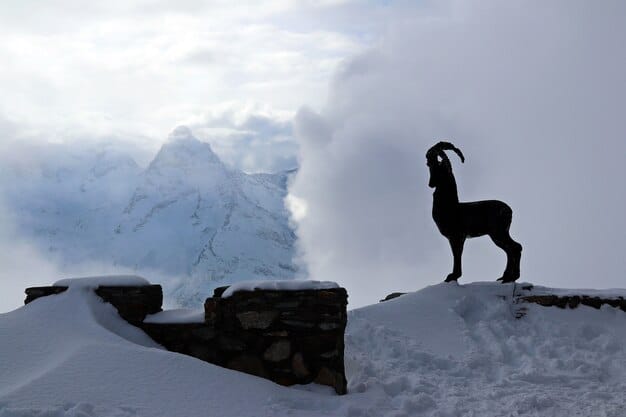
The unique biodiversity of these cold-adapted regions, often characterized by species that have evolved in isolation, faces an existential threat. The specialized plants and insects in alpine zones, for instance, are highly sensitive to temperature fluctuations and competition from lower-elevation species. As the climate warms, the delicate balance that sustains these ecosystems is disrupted, leading to population declines and local extinctions. The insights from new research emphasize the urgency of addressing Arctic and alpine warming, not only to protect these intrinsically valuable ecosystems but also to mitigate their global implications for sea level rise and carbon release.
The vulnerability of US Arctic and alpine ecosystems serves as a stark reminder of the far-reaching and often irreversible consequences of climate change. The rapid pace of change in these regions demands immediate and sustained efforts to reduce global emissions and implement targeted conservation strategies to protect their irreplaceable biodiversity.
Quantifying the Loss: New Methodologies and Predictive Models
Understanding the full scope of climate change’s impact on US biodiversity goes beyond observational studies; it requires sophisticated methodologies and predictive models that can quantify current losses and project future scenarios. New research in this domain is employing cutting-edge techniques, from advanced genetic sequencing to complex ecological modeling, to provide a clearer, data-driven picture of the scale of biodiversity decline. These quantitative insights are crucial for informing policy decisions and prioritizing conservation efforts where they can have the most significant impact.
One key area of advancement is the use of long-term ecological datasets combined with climate projections. Scientists are analyzing decades of species population data, migration patterns, and habitat changes, correlating them with historical climate records. This allows for the identification of climate-sensitive “indicator species” whose declines or shifts signal broader ecosystem distress. For instance, studies are now more accurately linking specific bird migration changes or insect population crashes to precise temperature increases or precipitation deficits. This refined understanding helps pinpoint critical thresholds beyond which ecosystem recovery becomes increasingly difficult.
Genomic Insights and Extinction Risk
Genomic research is also providing invaluable insights into biodiversity loss. By analyzing the genetic diversity within populations, scientists can assess their adaptive capacity to changing environmental conditions. New findings reveal that many populations are losing genetic variability, crucial for long-term survival, due to small population sizes and increased isolation. This makes them more susceptible to disease and less capable of adapting to rapid climatic shifts. These genomic analyses are helping to refine our understanding of extinction risk, moving beyond simple population counts to a more nuanced assessment of genetic health.
- Climate Velocity Mapping: Identifies areas where climate is changing fastest, helping predict where species will struggle to adapt.
- Species Distribution Models: Project future ranges of species under different warming scenarios, highlighting potential new habitats or areas of decline.
- Ecosystem Service Valuation: Quantifies the economic cost of biodiversity loss, emphasizing the societal value of natural systems.
Furthermore, new predictive models are moving beyond single-species analyses to simulate entire ecosystem responses. These models incorporate complex interactions between species, habitat fragmentation, and various climate stressors, offering a more holistic view of future scenarios. While these models have inherent uncertainties, they provide invaluable tools for conservation planning, allowing researchers to evaluate the effectiveness of different intervention strategies, such as creating climate corridors for migrating species or identifying priority areas for habitat restoration. The emerging consensus from these quantitative studies is that the rate of biodiversity loss is accelerating, and many ecosystems are already showing signs of irreversible change without significant intervention.
The advent of these advanced methodologies is transforming the study of climate change’s impact on biodiversity. By providing robust, quantifiable data, they empower policymakers and conservationists to make more informed decisions, moving from reactive responses to proactive strategies aimed at safeguarding the remaining biodiversity of US ecosystems.
Conservation Challenges and Pathways Forward
The new research on the impact of climate change on US ecosystems and biodiversity loss presents a formidable challenge, but it also illuminates critical pathways forward. The scale of the problem demands innovative, collaborative, and adaptive conservation strategies that acknowledge the dynamic nature of a warming world. Traditional conservation approaches, often focused on static protected areas, are proving insufficient in the face of rapidly shifting ecological conditions. A paradigm shift is necessary, emphasizing resilience, connectivity, and proactive adaptation.
One of the foremost challenges is the sheer complexity and interconnectedness of ecosystems. Addressing climate change impacts requires understanding not just individual species but entire food webs, hydrological cycles, and landscape-level processes. This necessitates interdisciplinary research and collaboration among scientists, policymakers, land managers, and local communities. Effective solutions must integrate ecological science with social, economic, and political realities to ensure successful implementation and long-term sustainability.
Implementing Adaptive Management Strategies
Adaptive management is emerging as a crucial framework for conservation in a changing climate. This approach involves continuously monitoring ecosystems, evaluating the effectiveness of interventions, and adjusting strategies based on new scientific information and changing conditions. For instance, instead of rigidly protecting a single habitat, conservation efforts might focus on creating “climate-smart” landscapes that allow for species migration and embrace dynamic habitat shifts. This could include establishing green corridors, restoring degraded lands to enhance connectivity, and managing water resources with future scarcity in mind.
- Translocation and Assisted Migration: For critically endangered species, moving populations to more suitable future habitats might be necessary.
- Restoration of Key Ecosystem Services: Focusing on restoring wetlands, forests, and other natural systems that provide flood control, water purification, and carbon sequestration.
- Mitigation of Non-Climate Stressors: Reducing pollution, habitat fragmentation, and invasive species to enhance ecosystem resilience to climate change.
Furthermore, fostering greater public awareness and engagement is paramount. The narrative around biodiversity loss needs to shift from a purely scientific discourse to a broader societal understanding of its tangible impacts on human well-being, from food security to community resilience. Supporting research, investing in green technologies, and transitioning to renewable energy sources are fundamental steps in mitigating the underlying causes of climate change, thereby reducing the long-term pressure on US ecosystems. Policy frameworks that incentivize sustainable land use, protect critical habitats, and facilitate international cooperation are also essential components of a comprehensive response.
Ultimately, the new research serves as a clear call to action. While the challenges are immense, the collective will and innovative capacity exist to forge meaningful pathways forward. By embracing adaptive strategies, prioritizing scientific understanding, and fostering broad societal engagement, the United States can still strive to protect its irreplaceable natural heritage and mitigate the profound impacts of climate change on its diverse ecosystems.
| Key Point | Brief Description |
|---|---|
| 🔥 Climate Accelerated Loss | New research indicates climate change is rapidly increasing biodiversity decline across US ecosystems. |
| 🌊 Ocean and Freshwater Stress | Marine life faces acidification and warming, while freshwater systems suffer from temperature and flow changes. |
| 🌲 Terrestrial Transformations | Increased wildfires, droughts, and species migration disrupt US forests and grasslands. |
| 🏔️ Arctic/Alpine Vulnerability | Melting ice and permafrost in Arctic and alpine regions threaten unique, cold-adapted species. |
Frequently Asked Questions About Climate Change’s Impact
Biodiversity loss refers to the decline in the variety of life on Earth, encompassing genetic, species, and ecosystem diversity. Climate change exacerbates this by altering habitats, disrupting ecosystems, and directly threatening species through extreme weather, temperature shifts, and other environmental stressors, accelerating extinction rates and weakening natural resilience.
Ocean acidification, caused by increased carbon dioxide absorption, reduces carbonate ions essential for marine organisms to form shells and skeletons. This directly harms creatures like corals, shellfish, and plankton, impacting their growth, reproduction, and survival, leading to cascading effects throughout the marine food web and threatening vital fishing industries.
While all US ecosystems face challenges, some, like certain temperate forests with high genetic diversity or wetlands with dynamic hydrological regimes, show limited resilience. However, even these are under increasing stress from extreme events. New research emphasizes that resilience often depends on the extent of human-induced modifications and the speed of climate shifts, making sustained adaptation challenging.
Climate change intensifies wildfires due to hotter, drier conditions, especially in the Western US. These megafires destroy vast swathes of habitat, kill wildlife directly, and prevent native vegetation regeneration. They also lead to soil erosion and allow invasive species to flourish, fundamentally altering ecosystem composition and reducing the overall biodiversity of affected regions.
Mitigation strategies include reducing greenhouse gas emissions through renewable energy and sustainable practices. Conservation efforts should focus on adaptive management, creating connected habitats, restoring damaged ecosystems, and managing water resources more efficiently. Protecting genetic diversity and fostering public awareness are also crucial for long-term ecological resilience.
Conclusion
The new research provides an unequivocal and urgent message: the impact of climate change on US ecosystems is profound, accelerating, and leading to significant biodiversity loss across every major biome. From the depths of the warming oceans to the frozen reaches of the Arctic, the intricate balance of nature is being disrupted at an alarming pace. While the challenges are immense, a deeper understanding of these changes, coupled with innovative conservation strategies and a collective commitment to reducing emissions, offers the only viable path forward to safeguard the irreplaceable natural heritage of the United States for future generations.

